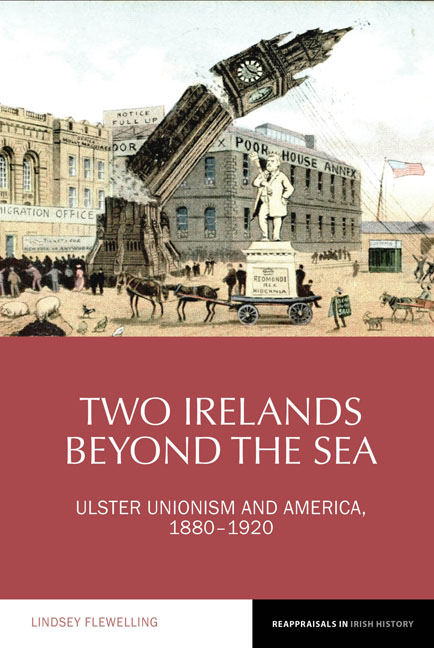Book contents
- Frontmatter
- Contents
- Acknowledgements
- List of Abbreviations
- 1 Introduction
- 2 Ulster Unionists and Irish-American Nationalism in the Late Nineteenth Century
- 3 The Third Home Rule Crisis, the First World War, and Partition
- 4 Scotch-Irish Identity and Attitudes to Home Rule
- 5 Unionist Visits to America
- 6 Transatlantic Religious Connections
- 7 The Idea of America
- 8 Conclusion
- Bibliography
- Index
7 - The Idea of America
- Frontmatter
- Contents
- Acknowledgements
- List of Abbreviations
- 1 Introduction
- 2 Ulster Unionists and Irish-American Nationalism in the Late Nineteenth Century
- 3 The Third Home Rule Crisis, the First World War, and Partition
- 4 Scotch-Irish Identity and Attitudes to Home Rule
- 5 Unionist Visits to America
- 6 Transatlantic Religious Connections
- 7 The Idea of America
- 8 Conclusion
- Bibliography
- Index
Summary
Confronted with the first Home Rule Bill in 1886, Irish historian W.E.H. Lecky wrote, ‘It would be difficult to conceive a policy more opposed to the best tendencies of the time’. He described the unification of Italy led by the Count of Cavour, unification of Germany under Otto von Bismarck, and praised the United States for overcoming the Civil War. He believed Americans had secured the unity of their republic for centuries to come. Lecky concluded, ‘These have been the contributions of other nations to the history of the nineteenth century. Shall it be said of English statesmen that their most prolific and most characteristic work has been to introduce the principle of dissolution into the very heart of their empire?’
Lecky saw national movements toward unity as the best tendency of the nineteenth century. The United States example was used to epitomize unification as the spirit of the age. Unionists claimed the British government was turning its back on the inexorable movement toward unity with its Home Rule policies. Appeals to unity as the spirit of the age echoed in unionist speeches and writings throughout the Home Rule period. Unity was said to be embodied in the coming together of the thirteen colonies as the United States, the fighting of the North to save the Union with the South, and enshrined in the American constitution.
Unionists appealed to the American example of national unity to gain legitimacy in their attempts to preserve the Union with Great Britain. American historical and constitutional examples were used by unionists in a wide variety of ways in their movement against Home Rule. This chapter will first examine unionist rhetoric utilizing the American Revolutionary War. Drawing upon ethnic connections with the Scotch-Irish, Ulster unionists emphasized themes of ethnic identity, legitimacy, militancy, and British coercion and betrayal. Next, the chapter will highlight the American Civil War as a historical parallel to the situation of Ulster unionists. The Civil War was used to underscore both obligations of the British government to fight to save the Union and the validity of Ulster militancy. Finally, the chapter will explore the unionists’ use of the American constitution. Unionists focused on American constitutional provisions and protections of minority rights to suggest solutions to Irish problems and emphasize flaws in the Home Rule system.
- Type
- Chapter
- Information
- Two Irelands beyond the SeaUlster Unionism and America, 1880–1920, pp. 208 - 239Publisher: Liverpool University PressPrint publication year: 2018

